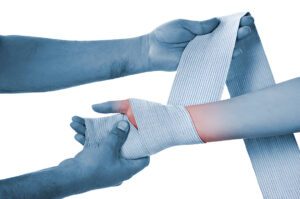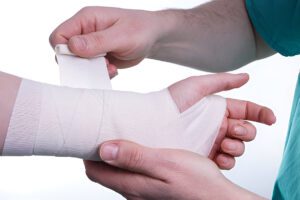Healing Hands Start Here Managing Pain After Hand Reconstruction Surgery
Hand reconstruction surgery can be a life-changing procedure, restoring function and improving quality of life for countless individuals. But the road to recovery is a complex one, marked by challenges that require thoughtful strategies and support. Whether you’re a patient, a physical therapist, or an orthopedic surgeon, understanding how to manage pain effectively is crucial. This blog will guide you through the intricacies of post-surgery pain management, rehabilitation, and recovery timelines, offering professional insights and practical tips to support your healing process.
Understanding Hand Reconstruction Surgery

Hand reconstruction surgery encompasses a range of procedures designed to repair or restore the function of the hand. Common types include tendon repairs, joint replacements, and bone grafts. These surgeries can address congenital defects, trauma injuries, or degenerative conditions like arthritis. With the intricate structure of the hand, recovery requires a comprehensive approach to ensure both functional and aesthetic outcomes.
The impact of hand reconstruction surgery is significant, not just physically but emotionally. The hand is a vital part of daily life, involved in everything from basic tasks to complex activities. Therefore, understanding the surgery and its aftermath is essential for a successful recovery.
Patients undergoing hand reconstruction must be prepared for various challenges, including pain management and rehabilitation. Knowledge of these aspects empowers patients to take an active role in their recovery, leading to better results and a smoother healing process.
Managing Pain Post-Surgery
Pain management is a critical component of recovery after hand reconstruction surgery. The right approach can alleviate discomfort, promote healing, and enhance overall well-being. Here’s a guide to the most effective pain management techniques:
Medication
Medications play a key role in controlling post-surgical pain. Common options include over-the-counter pain relievers like acetaminophen and ibuprofen, as well as prescribed narcotics for more severe pain. It’s important to follow your surgeon’s advice and use medications as directed to avoid potential side effects.
Physical Therapy
Physical therapy is an indispensable part of pain management, helping patients regain strength and mobility. By engaging in targeted exercises, patients can reduce stiffness and discomfort, gradually returning to normal function. A physical therapist will tailor a program to suit individual needs, focusing on flexibility, coordination, and strength.
Alternative Methods
Some patients find relief through alternative pain management techniques, such as acupuncture, massage, or heat therapy. These methods can complement traditional treatments, providing a holistic approach to recovery. Always consult with your healthcare provider before exploring alternative therapies to ensure they’re safe and appropriate for your condition.
The Importance of Rehabilitation
Rehabilitation is the backbone of recovery after hand reconstruction surgery. It plays a vital role in restoring function and mobility, enabling patients to reclaim their independence. Here’s why rehabilitation is so crucial:
Exercises
Rehabilitation exercises are designed to target the specific needs of the hand, promoting flexibility, strength, and coordination. These exercises may include gentle stretching, grip strengthening, and fine motor skills activities. Consistent practice is key to successful rehabilitation, and patients should follow their therapist’s guidance closely.
Strategies for Self-Care
In addition to formal rehabilitation, self-care strategies are essential for maintaining progress. This may involve at-home exercises, proper hand positioning, and ergonomic adjustments to daily tasks. Self-care empowers patients to take control of their recovery, reinforcing the gains made during therapy sessions.
Restoring Function
The ultimate goal of rehabilitation is to restore function and quality of life. By engaging in a structured rehabilitation program, patients can achieve significant improvements in hand function, enabling them to perform everyday tasks with ease and confidence.
Recovery Timeline
Understanding the recovery timeline is key to managing expectations and planning for success. While each patient’s experience is unique, here’s a general breakdown of the typical recovery stages after hand reconstruction surgery:
Immediate Post-Surgery
In the first few days following surgery, patients may experience swelling, bruising, and discomfort. Pain management is crucial during this stage, and rest is essential for allowing the body to heal. Patients may need to wear a splint or brace to protect the hand and support proper alignment.
Intermediate Phase
In the weeks following surgery, patients will begin rehabilitation and physical therapy. This phase focuses on regaining range of motion and strength, with gradual progression based on individual healing and tolerance. Milestones may include reduced swelling, increased mobility, and improved grip strength.
Long-Term Recovery
Long-term recovery can take several months, depending on the complexity of the surgery and individual factors. During this phase, patients continue to work on rehabilitation with a focus on refining skills and achieving full function. Regular follow-up appointments with your healthcare team are important to monitor progress and address any concerns.
Patient and Caregiver Tips
Navigating the challenges of post-surgery recovery requires a team effort. Here are some practical tips for patients and caregivers to ensure a smooth recovery process:
Managing Pain at Home

Effective pain management continues beyond the hospital or clinic. Patients and caregivers should establish a pain management routine, including medication schedules, physical therapy exercises, and alternative methods like heat or cold therapy. Keeping open communication with your healthcare team is essential for addressing any concerns.
Maintaining Mental Well-Being
Recovery is not just physical—it’s emotional too. Patients and caregivers should focus on maintaining mental well-being through activities like meditation, deep breathing exercises, and engaging in hobbies. Seeking support from friends, family, or a support group can provide encouragement and motivation.
Creating a Supportive Environment
A supportive environment is crucial for successful recovery. This may involve making practical adjustments at home, like organizing living spaces for easy access, using adaptive tools, and ensuring a safe environment for rehabilitation exercises. Caregivers play a vital role in providing assistance and encouragement throughout the recovery process.
Insights from Professionals
Expert opinions offer valuable insights into best practices for pain management and recovery after hand reconstruction surgery. Here’s what professionals in the field have to say:
Orthopedic Surgeons
Orthopedic surgeons emphasize the importance of individualized care plans, tailored to each patient’s unique needs and goals. They advise patients to closely follow postoperative instructions and engage in open communication with their healthcare team to ensure optimal outcomes.
Physical Therapists
Physical therapists highlight the critical role of rehabilitation in recovery. They stress the importance of consistency and commitment to therapy sessions, encouraging patients to take an active role in their recovery. Therapists also emphasize the value of setting realistic goals and celebrating small milestones along the way.
Patient Success Stories
Hearing from those who have successfully navigated the recovery process can be inspiring and motivating. Many patients find that a positive mindset, clear communication with their healthcare team, and a commitment to rehabilitation are key factors in their success.
Recovery after hand reconstruction surgery is a multifaceted journey, one that requires a comprehensive approach to pain management, rehabilitation, and support. By understanding the complexities of the recovery process, patients, physical therapists, and orthopedic surgeons can work together to achieve optimal outcomes.
For post-surgery patients, the road to recovery may seem daunting, but with the right tools and support, it is entirely achievable. By following the guidance of healthcare professionals, engaging in rehabilitation, and taking an active role in your care, you can look forward to a brighter future with improved hand function and quality of life.
For those seeking further support or information, countless resources are available, from online forums to in-person support groups. Don’t hesitate to reach out and explore the wealth of knowledge and support that can aid your recovery process.

